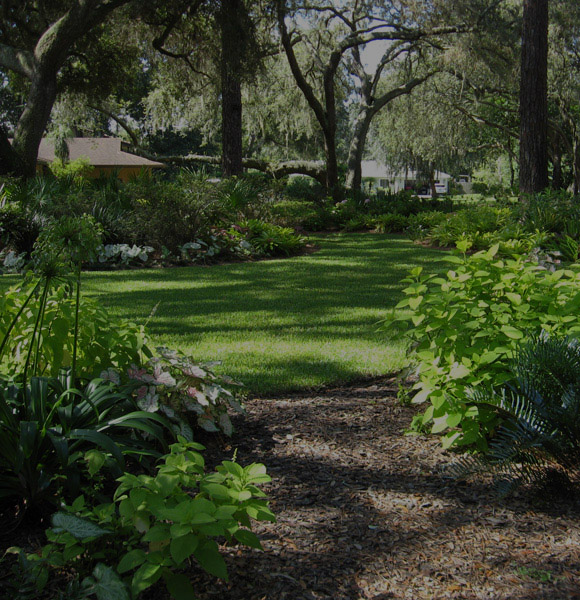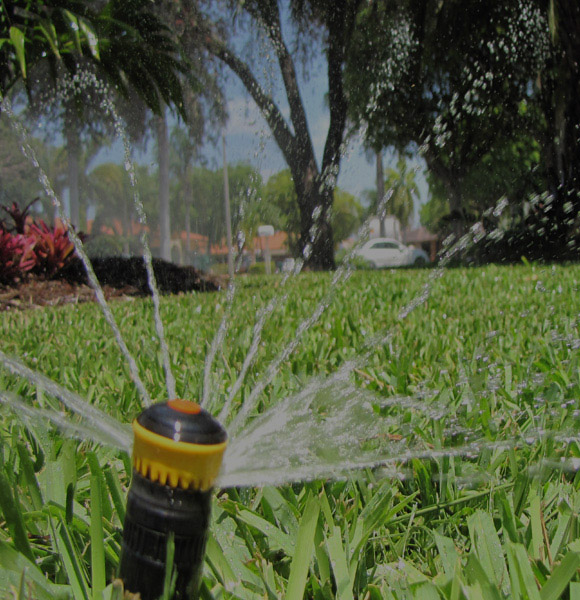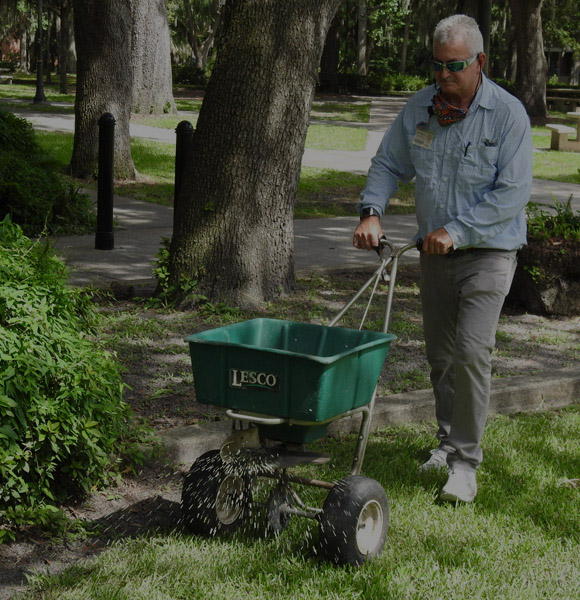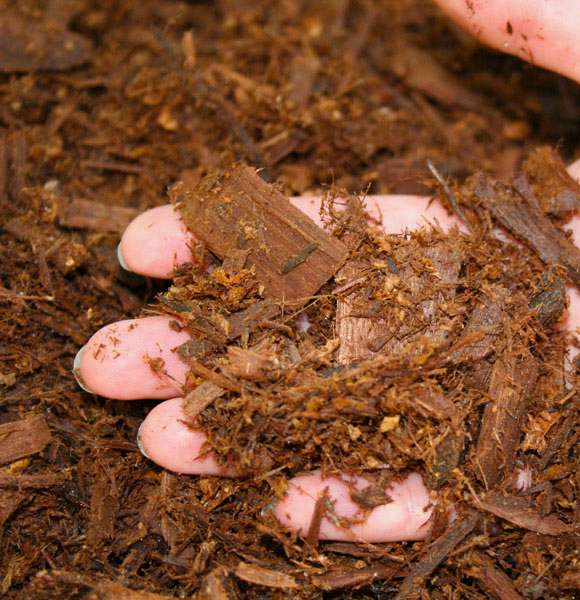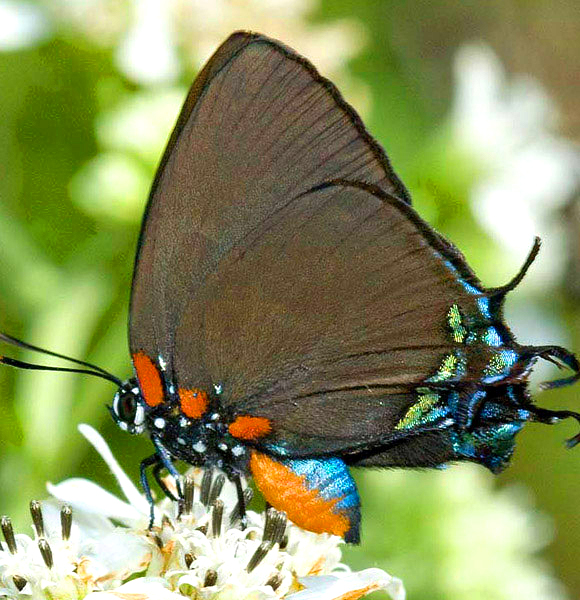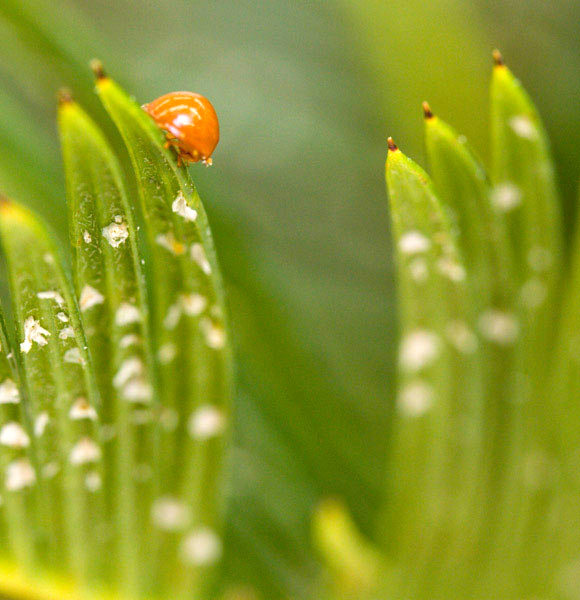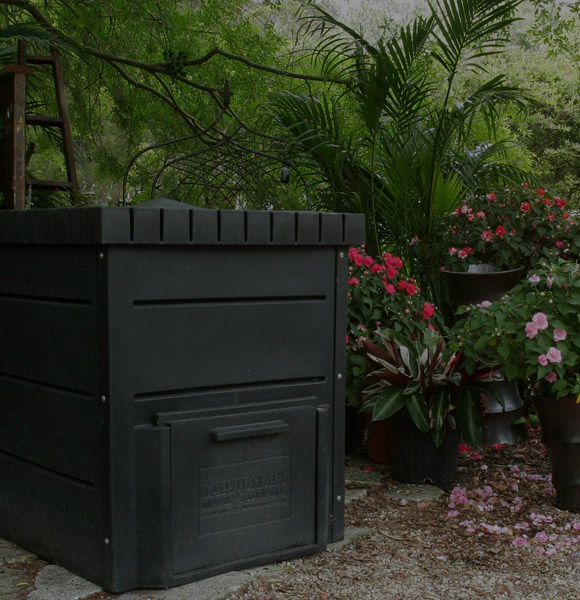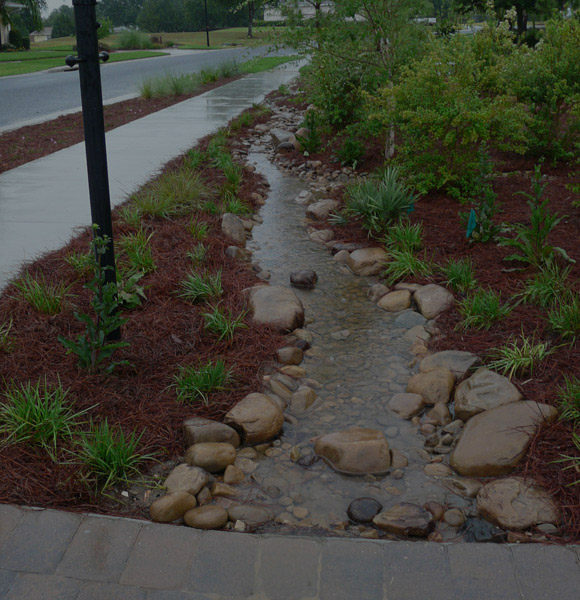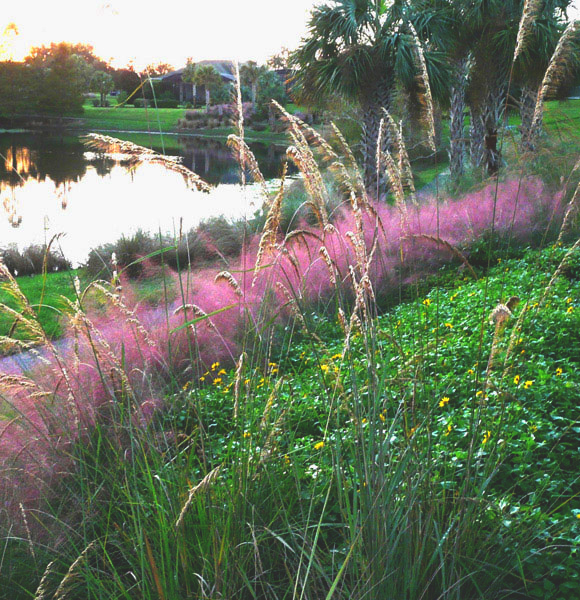For Home Landscapes
Fertilizers, pesticides, debris and eroded soil carried in stormwater can wreak havoc on our water quality. Florida-Friendly Landscaping™ seeks to retain and use as much of the rainfall and irrigation water that lands on our home landscapes as possible. Stormwater control features can be a beautiful addition to your landscape. Creating shallow rain gardens or shaping the earth on slopes with berms (rises) and swales (dips), can help slow runoff from heavy rains and allow the water time to soak into the ground. Wherever possible, maintain permeable walkways, driveways and patios to allow rain to soak into the ground.
Benefits:
- Most of the stormwater remains onsite and is filtered through plants and soil, reducing pollution coming from the landscape
- Captured water can be used to irrigate landscape plants
- Stormwater management protects the landscape from erosion
- Your healthy landscape may protect the quality of Florida’s waters
Impervious surfaces within in a community, such as building roofs, sidewalks, driveways, and roads can result in a significant amount of polluted stormwater runoff entering lakes, rivers, wetlands or oceans through storm drain systems. Low impact development (LID) stormwater management features, such as rain gardens, swales and bioretention areas are designed to capture stormwater, filter it through vegetation and soils, and infiltrate it into the ground. Other practices such as disconnecting downspouts, installing permeable pavement and harvesting rainwater can work in conjunction with these other tools to capture and filter or temporarily store rainwater on-site to help protect our water bodies.
Benefits:
- Most of the stormwater remains onsite and is filtered through plants and soil, reducing pollution coming from the landscape.
- Stormwater management protects the landscape from erosion.
- Healthy landscapes help protect the quality of Florida’s waters.
- Captured water can be used to irrigate landscape plants.
Florida receives almost 50 inches of rainfall each year. This rain can wash exposed soil, plant materials, fertilizers, pesticides, pet waste and other pollutants into nearby water bodies. Whether a, landscape is directly on a body of water or not, it is a part of a watershed and how it is managed affects the water quality in that particular watershed. Managing strategies should focus on keeping stormwater onsite by designing landscapes with raingardens, capturing water with rain barrels or cisterns, using porous materials for sidewalks and driveways, slowing runoff with swales and terracing and directing downspouts to porous landscape areas.
Benefits:
- Most of the stormwater will remain onsite and be filtered through plants and soil reducing pollution coming from the landscape
- Captured water can be used to irrigate landscape plants
- The landscape will be protected from erosion
- Clients will know they are helping to protect water quality in their watershed

